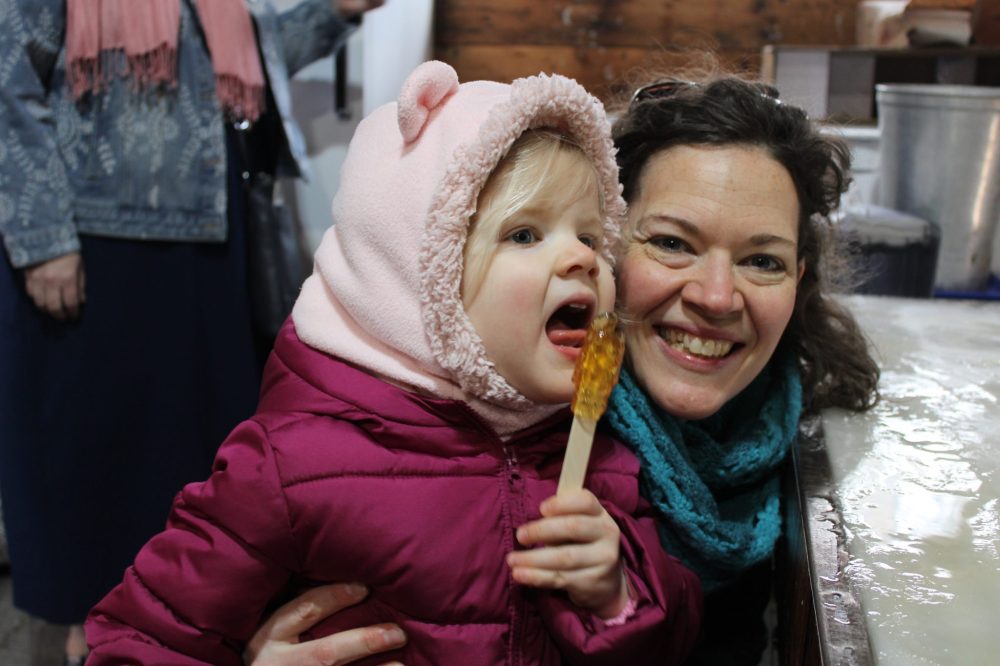Sugaring Off Festival sweet peek back in time
Advertisement
Hey there, time traveller!
This article was published 30/03/2025 (222 days ago), so information in it may no longer be current.
The maple syrup, music and historical re-enactments are back in St Pierre with new additions and a sneak peek at a new permanent display opening in June.
The Sugaring Off Festival April 5 to 6 at the cabane a sucre (sugar shack) will have Canada’s oldest Metis organization giving a hide tanning demonstration at their fur and artifact booth. They will also have Bannock cooking over a fire, play children’s games, and teach visitors about traditional plants and medicines.
Festival Sunday is when the Union nationale métisse Saint-Joseph will be at the festival.

According to the union, its origins can be traced back to September 24, 1884, in Batoche, Saskatchewan, where after Sunday mass at Saint-Antoine de Padoue Church, Gabriel Dumont, Louis Riel and several other Métis patriots founded the Association Saint-Joseph—the name of the patron saint being chosen by Louis Riel himself. It was officially established in 1887.
“It just brings back a little bit of the history to our community,” said St Pierre Museum president Rolly Gagne.
The museum is reaching even farther back for its new Rat River settlement permanent display that festival visitors get a sneak peek at before its official unveiling June 5.
“We have a timeline from 1850 to 1878,” explained Gagne.
He explained how the Metis were the first to live in the area after First Nations people.
“They came and they wintered in this area: the whole of De Salaberry and St Adolphe, St Malo and all this,” said Gagne.
“During the summer and spring they were gone to their buffalo hunt, then they would live… in St Norbert, St Vital, etc. But then in the winter they would leave with their animals and their families, and they’d come and winter in the Rat River.
“The reason they did that is because there was so much plentiful of everything right here: clearance, areas for their animals to graze even during the winter, huge trees, lots of animals to feed on.
“They were the first ones here, then afterwards us French Canadians and Europeans showed up – in 1877, that’s when my ancestors got here.”
They were the first to stick around, but not the first to travel through.
After First Nations people there were also the people setting up forts during the eighteenth century fur trade in places that would become Winnipeg and Portage la Prairie. La Compagnie de La Vérendrye reenactors with their cannons and muskets are back to set up on the grounds.
There are also the French and Metis people from the late 1800s working in the buildings, and chainsaw carver Lawrence Friesen outside using more modern equipment.
Music will be provided by three young fiddlers: Julie Fillion accompanied by Calia Perreault, Morgan Grace, and Veronique Demers.
Bellies can be filled with more than maple taffy. The French Canadian cuisine on offer includes Tourtière hand pies, crêpes, ham & maple syrup, grilled maple chicken sandwich, pea soup, bannock with jam, maple cinnamon buns, and maple bread pudding.
That can all be washed down with maple iced coffee, or regular coffee, tea and water if maple sugar levels get too high.
Nearly 100 volunteers make this all happen, according to Gagne.
That has helped keep prices lower for local families and visitors, while still rising money for the museum.
“We’ve lowered our cost by at least 30 percent for what we charge when we’re in the city. But that again is to just give everybody a break,” said Gagne.
More maple trees
All this maple syrup has to come from somewhere.
Ever since Armand Deshamais tapped a few trees on the museum grounds in the spring of 1986, the syrup has been made by hand.
The museum is now raising money to create a sugar bush. Donations of $100 per year for three years gets a new maple tree for the grounds.
The goal is to get at least 100 trees in the next two years. Gagne said this is a long-term, 25-year project to replenish trees.
It is also a way to tap more trees in an easier way than only going out to the 325 trees throughout the area with a truck, though they do still hope to borrow from their neighbours’ trees.
Eventually, lines would connect to an evaporator like a sugar bush right out of Quebec, providing more sweet taffy on the snow for generations.
